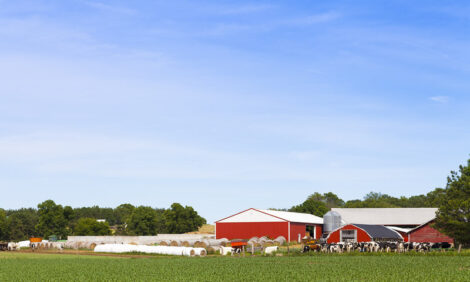



High liver fluke risk for cattle predicted in 2018
After a record wet summer, cattle farmers should review parasite control plans for 2018 with their vets as a high risk of liver fluke is predicted in several UK regions this year.
NADIS1 predicts North, West and Central Scotland; West Wales, and Cornwall will experience a high fluke risk this year, whilst Eastern Scotland, and parts of North and South West Wales are expected to sustain a medium risk.
The high-risk prediction follows one of the wettest summers on record. Heavy rainfall one year can increase the risk of liver fluke on pasture in the following grazing season.
It is estimated that more than 25% of bovine livers are condemned because of liver fluke damage. Cattle with chronic liver fluke infection typically show signs of chronic weight loss and diarrhoea. Chronic liver disease infection can cause production losses if farmers do not implement control measures. If slaughterhouse results show liver infections farmers are advised to seek advice regarding treatment.
Boehringer Ingelheim Animal Health’s Ruminant Veterinary Advisor, Nicky Bowden, advises: “Any untreated beef cattle that will graze potentially infected pastures, should either be treated for fluke before turnout, or screened for fluke by checking for the presence of fluke eggs in faeces, using pooled faecal samples from 10 animals.”
Cattle that have been treated for fluke at housing should be tested prior to turnout for the presence of adult fluke and treated if results are positive. In order to preserve the efficacy of triclabendazole for cases of acute fluke in sheep, and to reduce the build up of resistant populations of fluke, farmers should consider using alternative products where possible, such as those containing closantel or nitroxynil (Trodax®) ”
COWS2 recommends three simple steps to identifying risks from liver fluke on farm:
- Identify high-risk areas on farm – consider if these areas can be avoided.
- Ask for abattoir feedback on any liver rejections – to identify any fluke infectivity.
- Investigate losses – post-mortem examinations should be undertaken in the event of any unexplained or sudden deaths.
Making precautions for ‘safe grazing’ for autumn-born calves in preparation for turnout is crucial and should be planned in advance. Ms. Bowden advises: “Safe grazing should be used strategically to reduce reliance on wormers to control internal parasites such a liver fluke and gutworms.”
For calves, safe grazing includes using last year’s pastures grazed by sheep; reseeded pastures; or from mid-summer onwards, silage or hay aftermaths. Farmers are encouraged to make use of the new NADIS parasite control planners, which are available through participating veterinary practices.
| TheCattleSite News Desk | Read more Boehringer Ingelheim News here |


